
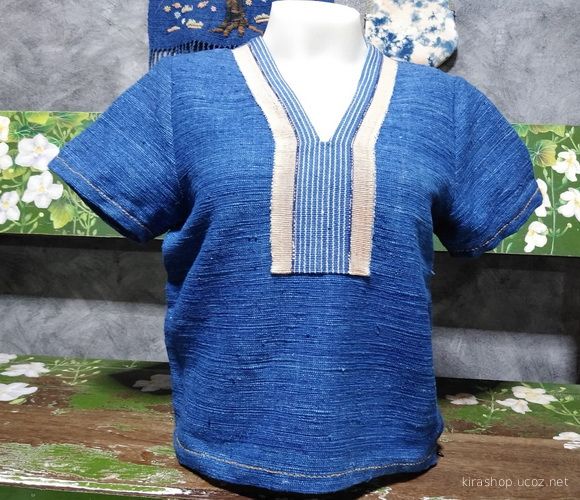 Another explanation for the continued wearing of ethnic styles is that a widely shared cultural aesthetic in dress may influence preferences for particular garments. For example, the soft lines of the sari in India, and the shapely but body-covering sarong and blouse (kain-kebaya) in Indonesia, reflect the cultural ideal of femininity in those countries.
Another explanation for the continued wearing of ethnic styles is that a widely shared cultural aesthetic in dress may influence preferences for particular garments. For example, the soft lines of the sari in India, and the shapely but body-covering sarong and blouse (kain-kebaya) in Indonesia, reflect the cultural ideal of femininity in those countries.
Selected Examples of Ethnic Dress
Garments and accessories for ethnic dress are fashioned from a wide variety of materials, often thought to be made by hand. In today's world, however, many are manufactured by machine. Textiles of many types are most frequently used for garments, although in some locations, people wear furs, skins, bark cloth, and other fibers.
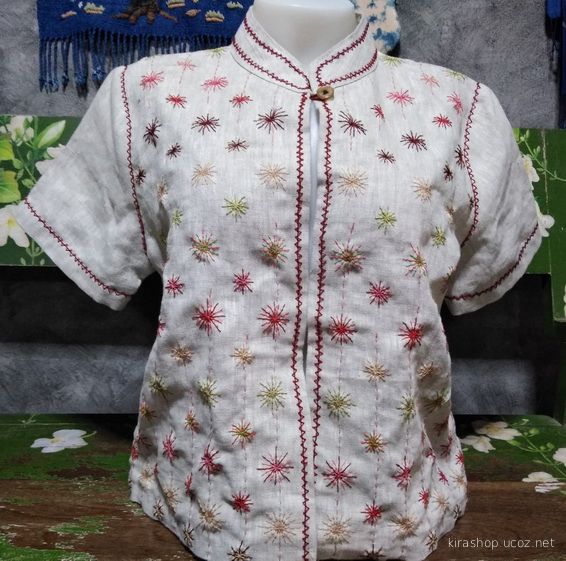 Particularly in tropical and subtropical areas in Africa, Asia, and the Pacific, examples of ethnic dress include wrapped garments, such as the wrapper, also called lappa, the sari, sarong, and pareo. In moderate and cold climates on all continents, tailored or preshaped clothing is cut and sewn to fit the body closely to provide warmth.
Particularly in tropical and subtropical areas in Africa, Asia, and the Pacific, examples of ethnic dress include wrapped garments, such as the wrapper, also called lappa, the sari, sarong, and pareo. In moderate and cold climates on all continents, tailored or preshaped clothing is cut and sewn to fit the body closely to provide warmth.
On the Asian continent, where the climate extends from tropical to Arctic, garment types range from wrapped to cut-and-sewn examples. Throughout India, women wrap six to nine yards of unstitched fabric in specific styles to fashion the wrapped garment called the sari, which is ordinarily worn with a blouse (called a choli). Many styles of wrapping the sari exist that distinguish different ethnic backgrounds within India. Indian men wrap from two to four yards of fabric to fashion garments called lungi and dhoti that they wear around their lower body.
Among the Hill Tribes of Thailand, Hmong women wear a blouse and skirt with an elaborate silver necklace, an apron, a turban-type head covering, and wrapped leg coverings.
Asia and the Pacific
In the steppe lands of Asia (for example, Mongolia), tailored garments of jacket and trousers are worn with caps and boots. In China, types of dress have changed over time, in relationship to contact with other peoples. Turks, Mongols, Manchus, and other peoples of China's Central Asian and northern borderlands sometimes influenced the cut and style of tailored garments in China itself. The fitted, one-piece women's garment with mandarin collar and side-slit skirt known as a cheongsam, or qipao, was invented in Shanghai in the 1920s as a garment that was acceptably both "Chinese" and "modern."
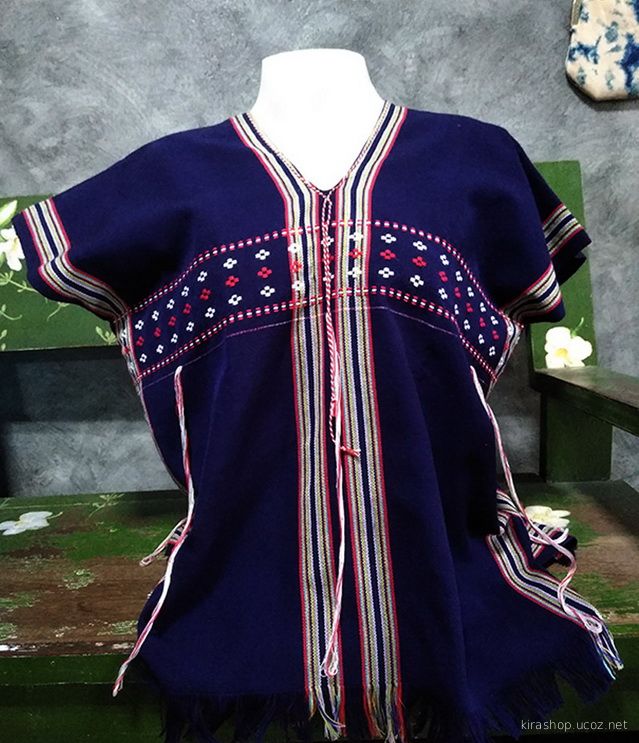
 Its use declined in the People's Republic of China after the late 1950s, but it continued to be worn in Chinese communities outside the mainland and is widely regarded as the "ethnic dress" of Chinese women. In Japan, variations of the garment known as kimono are cut and sewn, as well as wrapped. The kimono's body and sleeves are formed by stitching textiles together, but the body of the garment wraps around the human form and is secured by a sash known as the obi. The Korean ensemble called a hanbok includes a skirt for women and pants for men that are cut and sewn, but the top garment, a jacket for both men and women, is called chogori and wraps across the breast.
Its use declined in the People's Republic of China after the late 1950s, but it continued to be worn in Chinese communities outside the mainland and is widely regarded as the "ethnic dress" of Chinese women. In Japan, variations of the garment known as kimono are cut and sewn, as well as wrapped. The kimono's body and sleeves are formed by stitching textiles together, but the body of the garment wraps around the human form and is secured by a sash known as the obi. The Korean ensemble called a hanbok includes a skirt for women and pants for men that are cut and sewn, but the top garment, a jacket for both men and women, is called chogori and wraps across the breast.
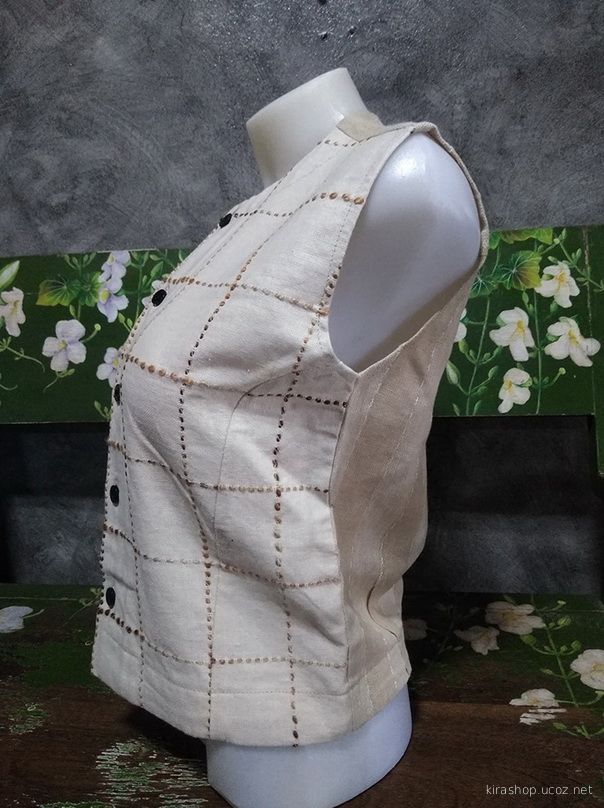
 In Indonesia, cloth (kain) is wrapped around the lower body for both women and men, and is worn with a blouse (kebaya) or a shirt (baju). Another option for clothing the lower body is the sarong, cloth sewn to make a tubular garment. (This word was borrowed by Hollywood to refer to the wrapped garment worn by Hedy Lamarr and Dorothy Lamour that also covers the breasts. Among many of the peoples of Indonesia, the latter style is regarded as highly informal, worn for example by women on their way to the bathing pool.) Bare feet or various types of sandals and slippers are worn with these garments.
In Indonesia, cloth (kain) is wrapped around the lower body for both women and men, and is worn with a blouse (kebaya) or a shirt (baju). Another option for clothing the lower body is the sarong, cloth sewn to make a tubular garment. (This word was borrowed by Hollywood to refer to the wrapped garment worn by Hedy Lamarr and Dorothy Lamour that also covers the breasts. Among many of the peoples of Indonesia, the latter style is regarded as highly informal, worn for example by women on their way to the bathing pool.) Bare feet or various types of sandals and slippers are worn with these garments.
On many of the islands of the Pacific, such as Samoa and Hawaii, the wrapped garment is called a pareo. The long, shapeless dress called a muumuu, or robe mission ("mission dress"), introduced by missionaries to clothe women who traditionally were only lightly dressed, is now widely accepted as a form of ethnic dress throughout the Pacific islands.
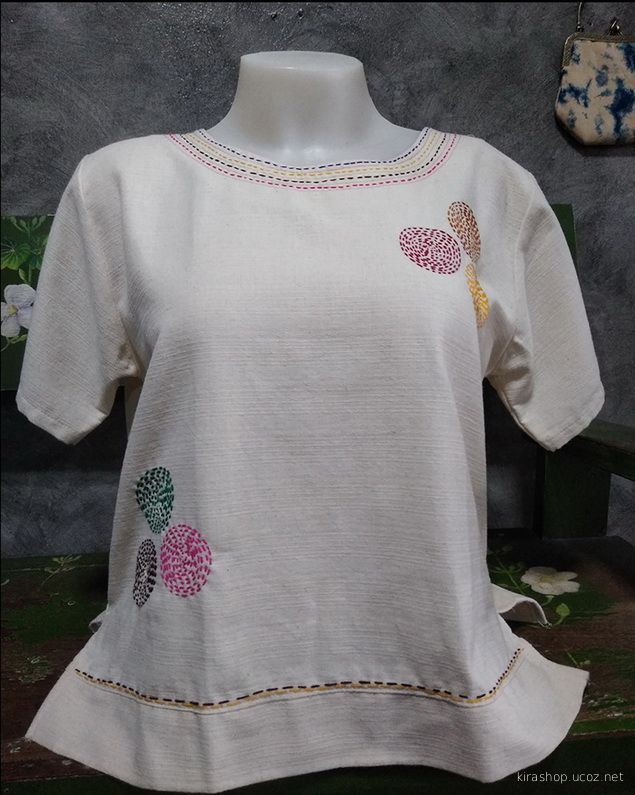
 Elaborate feathered headdresses are worn in many parts of New Guinea with few other body coverings. At the time of European arrival in Australia, Aborigine dress consisted of animal skin cloaks, belts, and headbands along with body piercings, scarification, and body paint. Tattooing various parts of the body has been common among many groups in the Pacific, such as the Maori people of New Zealand and some groups of Japanese.
Elaborate feathered headdresses are worn in many parts of New Guinea with few other body coverings. At the time of European arrival in Australia, Aborigine dress consisted of animal skin cloaks, belts, and headbands along with body piercings, scarification, and body paint. Tattooing various parts of the body has been common among many groups in the Pacific, such as the Maori people of New Zealand and some groups of Japanese.
Because of extensive colonization in Asia and the Pacific, Europeans influenced garments and accessories of indigenous people. In return, the colonizers were influenced by exposure to Asian types of dress and borrowed or modified Asian garments, such as the cummerbund, the pajama, and bandannas, into both everyday and formal dress, thus culturally authenticating them.
Ethnic Dress
By Joanne B. Eicherv

 East Asia: History of Dress
East Asia: History of Dress
East Asia includes the present countries of China, Korea, Japan, and Vietnam (the latter also can be considered part of Southeast Asia), along with adjacent areas of Inner Asia that have historically sometimes been part of the Chinese empire and often have been heavily culturally influenced by China. These regions include Manchuria (now the three northeastern provinces of China); Mongolia (including the Inner Mongolian Autonomous Region of China and the independent Republic of Mongolia); East Turkestan (now the Chinese province of Xinjiang); and Tibet (now the Tibet Autonomous Region of Chhia, plus adjacent areas of the provinces of Qinghai, Sichuan, and Yunnan).
China was historically the dominant presence in East Asia, by virtue of size, population, and wealth; China regarded itself as the center of the world, the fountainhead of culture, and a beacon of civilization to surrounding peoples. Surrounding peoples did not necessarily share that assessment, but they could not avoid, and often did not wish to avoid, the influence of Chinese culture. The importance of silk in the history of East Asian dress is both evidence and metaphor for China's cultural domination of the region.
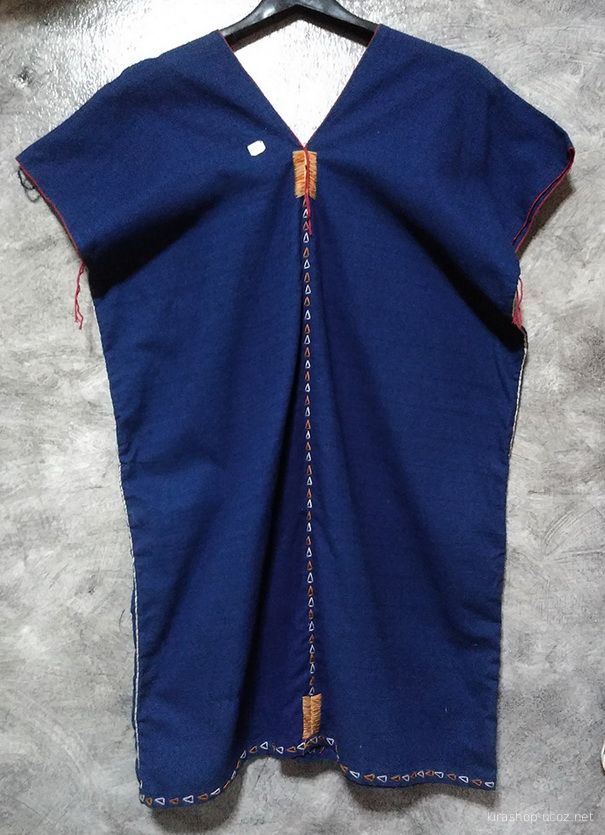
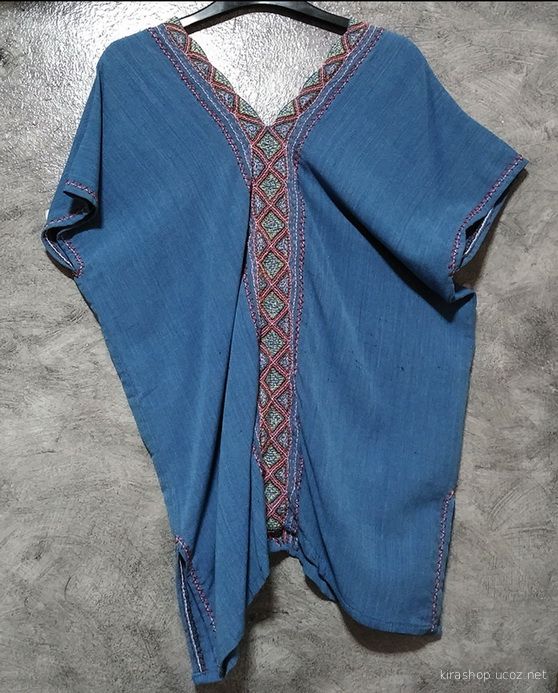 Silk, produced in parts of China since at least the third millennium B.C.E., was the favored textile material of China's elite thereafter (commoners wore hempen cloth in ancient times, cotton increasingly after about 1200 C.E.). Both the technology of silk production and the cultural preference for wearing silk were exported from China to Korea, Japan, and Vietnam in the early centuries C.E. Silk cloth (but not, except by accident or industrial espionage, silk technology) was exported regularly and in large quantities from China to Central and Western Asia along the Silk Route beginning in the first century B.C.E.
Silk, produced in parts of China since at least the third millennium B.C.E., was the favored textile material of China's elite thereafter (commoners wore hempen cloth in ancient times, cotton increasingly after about 1200 C.E.). Both the technology of silk production and the cultural preference for wearing silk were exported from China to Korea, Japan, and Vietnam in the early centuries C.E. Silk cloth (but not, except by accident or industrial espionage, silk technology) was exported regularly and in large quantities from China to Central and Western Asia along the Silk Route beginning in the first century B.C.E.
The cultural frontier is a very old one. Around 1000 B.C.E., near the Tarim Basin in East Turkestan (now Xinjiang Province, China), the easternmost representatives of the Celtic people were weaving woolen twill cloth in plaid patterns indistinguishable from those made by Celts in Europe at the same time. A thousand miles to the east, the kings of China's Western Zhou Dynasty (1046-781 B.C.E.), in their capital city near present-day Xi'an, clothed themselves in richly patterned silks woven in royal workshops. The border between the Chinese culture and the Inner Asian culture areas may thus be thought of as the border between silk and wool, with Chinese silk serving to create trade connections between the two cultures.
East Asia:
History of Dress. By
John S. Major
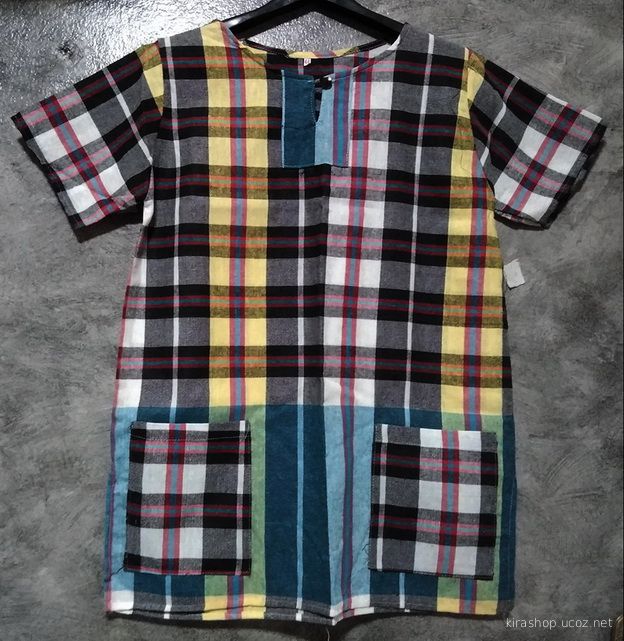
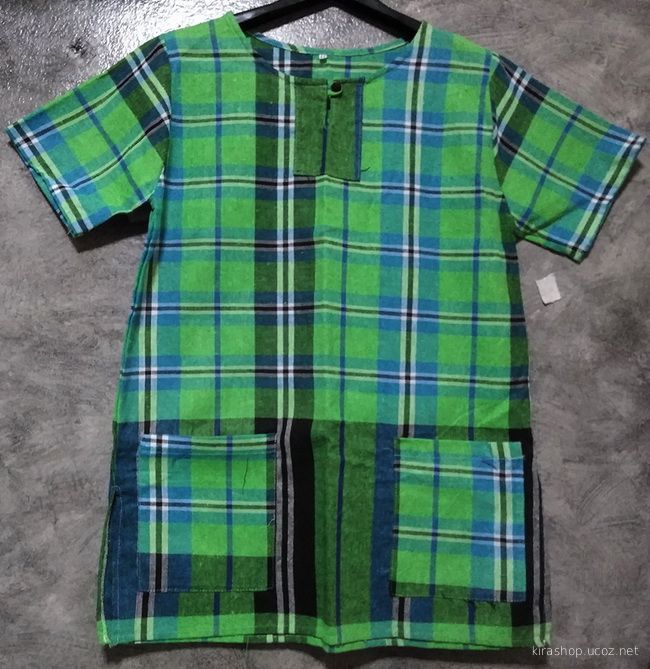 Central Asia: History of Dress
The styles of dress in Central Asia are as varied in appearance as are the ethnic origins of the people. Even in the early 2000s tribal groups living in remote valleys dress in a distinctive manner using their fabrics, their skills, and their accessories to accentuate their uniqueness.
The demarcation of territories with borders is a recent phenomenon in Central Asia. Earlier the people moved freely and intermingled. The nomadic peoples' yearly trek followed a designated path known as "The Way" and for special markets or meetings of different tribal groups they traveled across many territories. The land as a whole was known as Turkestan, and it was only under the Soviet regime that it was divided into Turk-menistan, Kazakistan, Kyrgyzstan, Uzbekistan, and Tajikistan.
Central Asia: History of Dress
The styles of dress in Central Asia are as varied in appearance as are the ethnic origins of the people. Even in the early 2000s tribal groups living in remote valleys dress in a distinctive manner using their fabrics, their skills, and their accessories to accentuate their uniqueness.
The demarcation of territories with borders is a recent phenomenon in Central Asia. Earlier the people moved freely and intermingled. The nomadic peoples' yearly trek followed a designated path known as "The Way" and for special markets or meetings of different tribal groups they traveled across many territories. The land as a whole was known as Turkestan, and it was only under the Soviet regime that it was divided into Turk-menistan, Kazakistan, Kyrgyzstan, Uzbekistan, and Tajikistan.
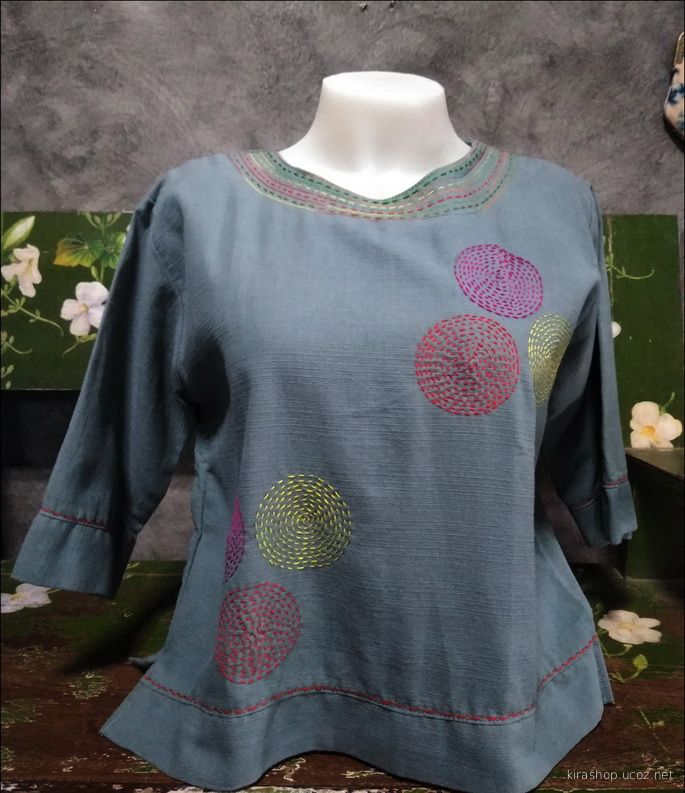 Uzbekistan, which has the largest population, has a large number of Tajiks, Kazaks, and Turkomans who are citizens of the country. The Ferghana Valley covers parts of Tajikistan and runs into Kyrgyzstan running right up to Osh and has a culture that is more akin to the Uzbek than the Kyrgyz traditions.
Despite the fact that the dress when seen worn by the people is distinctive, the basic structure of the main dress is very similar. This is perhaps true of all horse-riding nomadic cultures, qualities that molded the costume of the people of Central Asia. It is also interesting that the basic dress of men and women is also similar. A type of tunic or shirt, kurta, was worn by the men and women, with drawstring pantaloons, the salwar, which was very baggy at the top and tapered down to the cuffs, that were often decorated with embroidery or edged with woven tapes.
Uzbekistan, which has the largest population, has a large number of Tajiks, Kazaks, and Turkomans who are citizens of the country. The Ferghana Valley covers parts of Tajikistan and runs into Kyrgyzstan running right up to Osh and has a culture that is more akin to the Uzbek than the Kyrgyz traditions.
Despite the fact that the dress when seen worn by the people is distinctive, the basic structure of the main dress is very similar. This is perhaps true of all horse-riding nomadic cultures, qualities that molded the costume of the people of Central Asia. It is also interesting that the basic dress of men and women is also similar. A type of tunic or shirt, kurta, was worn by the men and women, with drawstring pantaloons, the salwar, which was very baggy at the top and tapered down to the cuffs, that were often decorated with embroidery or edged with woven tapes.
The tunic has a universal pattern. It is made of a narrow width of cotton or silk, which more or less matches the width of the shoulders and was folded over to cover the body, falling to about 4 inches (10 cm) from the ankles. A circular cut was made for the neck; the older pieces were open at the shoulders, while later ones had a cut from the center of the neck. The sleeves were also straight and sewn into the sides and the body piece, with the sleeve opening extending below the armpit.
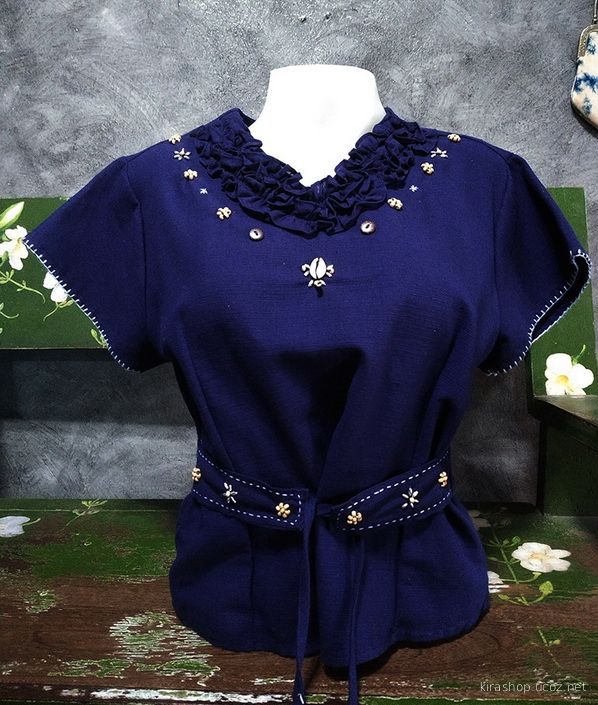
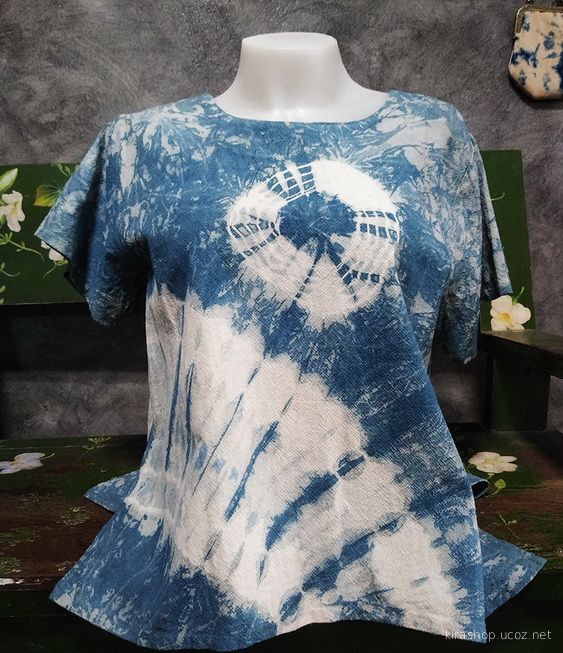 Diagonally cut pieces, narrow at the top and broader at the bottom, were attached to the side of the body of the tunic below the sleeves. They gave the shape to the tunic. The section joining the sleeve would have gussets attached between the sides and the sleeves giving a greater freedom of movement. A girdle, futa, or a length of cotton or silk either of one color, striped, or printed was worn wrapped around the waist, which supported the waist as men and women had an arduous life of walking through mountain areas often carrying heavy loads. Over this dress they wore an open coat, chapan, of cotton or silk material, which was either padded for winter or was plain, depending on the time of the year and the status of the user. The khalat was the more elaborate stylized silk coat of striped silk, cotton, or richly patterned abr (ikat) silk. These were invariably lined to preserve the cloth and the lining was often of hand-printed cotton material. Sheepskin coats embellished with embroidery were worn in winter.
Diagonally cut pieces, narrow at the top and broader at the bottom, were attached to the side of the body of the tunic below the sleeves. They gave the shape to the tunic. The section joining the sleeve would have gussets attached between the sides and the sleeves giving a greater freedom of movement. A girdle, futa, or a length of cotton or silk either of one color, striped, or printed was worn wrapped around the waist, which supported the waist as men and women had an arduous life of walking through mountain areas often carrying heavy loads. Over this dress they wore an open coat, chapan, of cotton or silk material, which was either padded for winter or was plain, depending on the time of the year and the status of the user. The khalat was the more elaborate stylized silk coat of striped silk, cotton, or richly patterned abr (ikat) silk. These were invariably lined to preserve the cloth and the lining was often of hand-printed cotton material. Sheepskin coats embellished with embroidery were worn in winter.
 Often men wore innumerable khalat one on top of the other to indicate their affluence. They began with the simplest at the bottom and worked their way up to the silk brocaded or velvet khalat given by the emir. Women normally wore an undershirt munisak and a tunic on top. In some cases women, too, wore more than one tunic and a shaped chapan on the top.
Often men wore innumerable khalat one on top of the other to indicate their affluence. They began with the simplest at the bottom and worked their way up to the silk brocaded or velvet khalat given by the emir. Women normally wore an undershirt munisak and a tunic on top. In some cases women, too, wore more than one tunic and a shaped chapan on the top.
The dress worn next to the body was embellished at all the openings. This was not only for decoration, but also to protect the wearer. The neck carried elaborate embroidery around the collar and the sleeves as well as the side openings. The cuffs of the salwar were also embroidered or embellished with woven tapes, zef. These tapes were tablet woven and carried elaborate patterns. The finest were the tablet woven velvet tapes used for embellishing the kahalats.
The men's chapans or khalats were open in the front and had to be closed either with a shawl or with a leather belt with elaborate buckles. The belt was a sign of servitude and all the courtiers had to wear it when appearing before the emir.
The most elaborate part of the dress was the headdress. Men, women, and children used the headdress and they differed from region to region. By seeing the embroidery on the cap, the ethnic group and area could be identified. The most common were hand-stitched and embroidered skullcaps. Turbans were used by men and women. The bigger the turban the more important the person. Women in Kyrgyzstan wore elaborate turbans, which were decorated with silver and gold jewelry meant especially for the headdress.
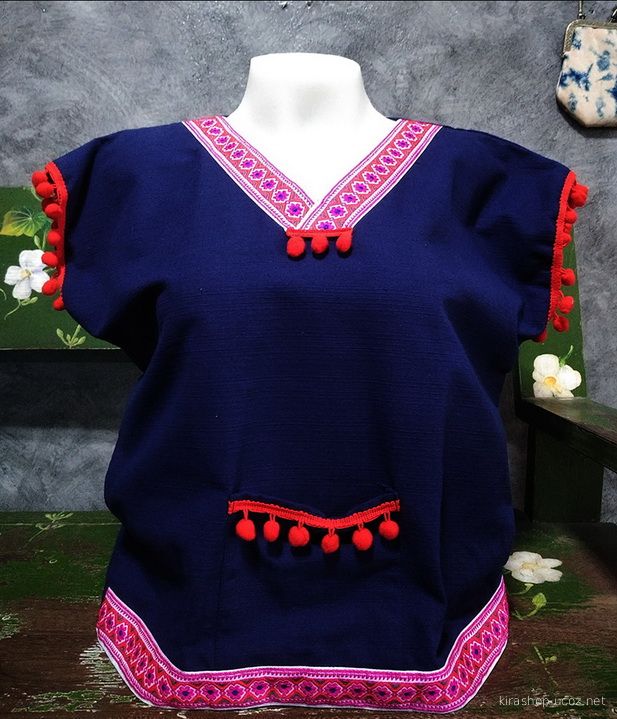
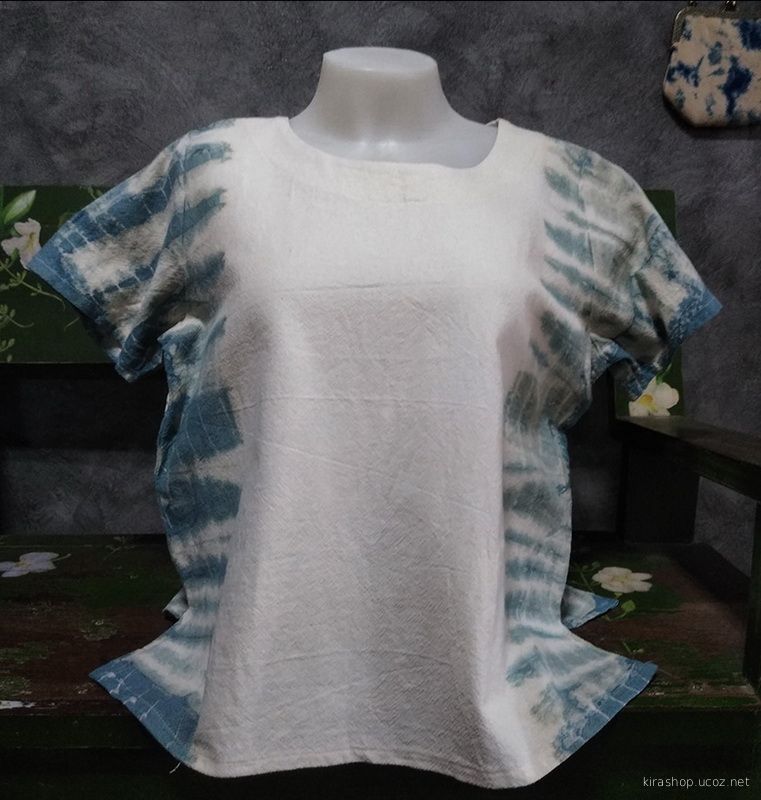 Specialists wove the turban cloths, which could be of cotton or of silk. The indigo blue and white checks, chashme bulbul, the nightingale's eye pattern, was greatly appreciated. The skullcap worn by men was the base for the elaborate turban worn in public.
Specialists wove the turban cloths, which could be of cotton or of silk. The indigo blue and white checks, chashme bulbul, the nightingale's eye pattern, was greatly appreciated. The skullcap worn by men was the base for the elaborate turban worn in public.
The most elaborate headdress was the one worn by young Kazak and Kyrgyzi women. The high conical hat, Saukele, was nearly 28 inches (70 cm) in height. It was made of felt, covered with velvet or silk and edged with fur along its rim. It was elaborately decorated with coral, turquoise, strings of pearls, and embellished with silver and gold pendants, as well as coins. The women of Karakalapak, a remote area near the Aral Sea, also used these headdresses, which were heirlooms and passed from one generation to the other. The use of such pointed caps is possibly an ancient tradition deriving from the clothing of the Scythian tribes of classical times, as it is linked with the famous Saka-tigra khanda Saka, that is to say, Scythian with pointed caps.
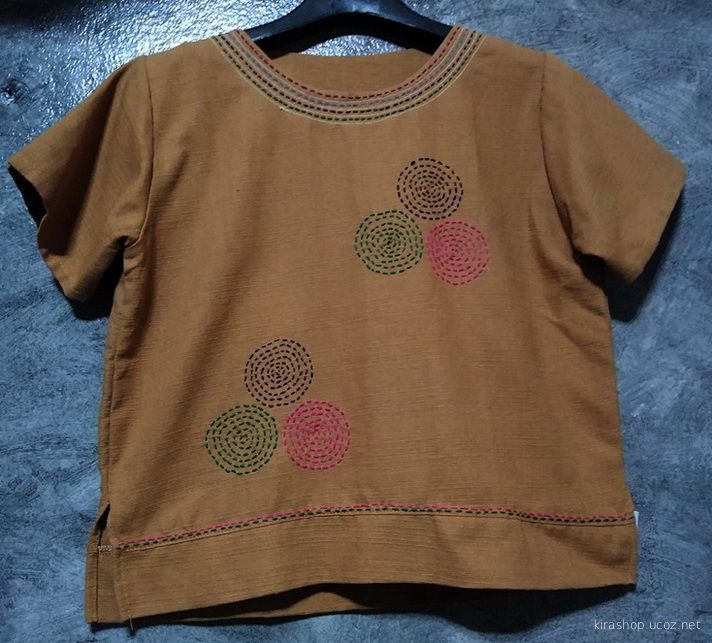 The Turkoman married woman wore an elaborate headdress covered with silver and gold work and over that she wore a richly embroidered mantle, which came over her head and covered her body. The mantle has mock sleeves at the back.
The Turkoman married woman wore an elaborate headdress covered with silver and gold work and over that she wore a richly embroidered mantle, which came over her head and covered her body. The mantle has mock sleeves at the back.
The children were dressed with great care to protect them from evil influences and the evil eye. Silken shirts of children would be covered with amulets of silver as protective devices.
A study of different ethnic styles of Central Asian dress reveals the importance of accessories in creating a distinctive dress. A remark made by an Uzbek woman "everyone knows how to put on a dress, but not everyone knows how to carry it off" is a very true indicator of a well-dressed woman among these tribal peoples.
Though the traditions of dress in the area have ancient linkages, they are subject to change. The influences that lead to a change of fashion vary according to what is important within their own group. The changes in the past were less extreme and are more or less a case of variations on the same scheme. Records of travelers, which give descriptions of the dress of the people over the last couple of hundred years, indicate the changing fashions. The Soviet influence, especially in the urban areas, did introduce changes in style, but in the rural areas and among the older persons the style of dress remains to a great extent unchanged.
Central Asia: History of Dress By Jasleen Dhamija
